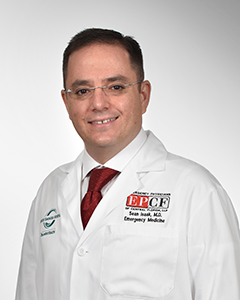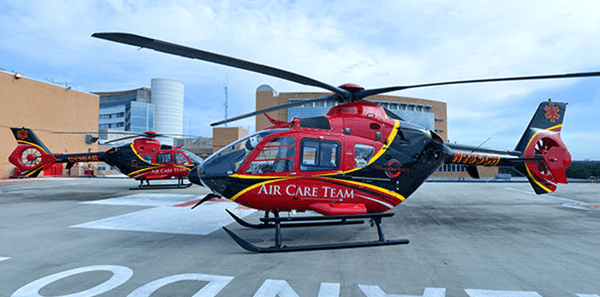Heimlich vs. CPR: What To Do When Someone Chokes
We’ve all probably experienced it ourselves or have seen someone go through it — you take too large a bite of a piece of food or don’t chew it all the way and begin to choke.
In those few seconds, it might be difficult to breathe and drinking a glass of water or coughing up what’s stuck in your airway might provide relief.
But there are certain instances when these methods don’t work and someone may need to either perform the Heimlich maneuver or CPR.
Several things can cause choking, including a severe allergic reaction, accidentally inhaling a foreign object (which can happen with children), a near-drowning incident and medical disorders that affect nerve and muscle function. Choking is the fourth leading cause of death related to unintentional injuries, according to the National Safety Council, but the Heimlich maneuver and CPR often saves lives.
Each method is used in very specific circumstances. If you aren’t clear on the difference between the two, here are some general guidelines to help someone if they are choking.
The Heimlich Maneuver
The main difference between when to perform the Heimlich maneuver and CPR when someone is choking is that the Heimlich is performed when someone is still conscious.
The Heimlich maneuver, which also is referred to as abdominal thrusts, involves positioning yourself behind the person who is choking (they should be standing), placing your arms around their waist and putting your fist just above the person’s belly button. You then grab this fist with your opposite hand and perform fast upward thrusts with your fist repeatedly to push the lodged object out of the airway.
This technique is best for someone who isn’t pregnant or an infant, since there may be a higher risk of injury in these groups. You even can do this same maneuver on yourself.
If the person choking is pregnant, your fist should be placed on the chest near the breastbone. If the person is obese and you can’t get your hands around their abdomen, you will need to perform chest thrusts — just as you would to a pregnant woman.
If it’s an infant, you should begin by performing five back blows, which involves holding the baby face down on the lower part of your arm, which should rest on your thigh. Next, use the bottom part of your hand and gently hit the infant on the back repeatedly to dislodge what is stuck in the throat or airway. The next step would be to do chest compressions by carefully rolling the infant onto its back. Then, place two of your fingers in the center of the breastbone and push upward and downward, doing one chest thrust per second. Alternate between five back blows and five chest thrusts until you get the object out of the infant’s airway or until the infant becomes unresponsive. If the baby does become unresponsive, you should then start doing CPR with chest compressions.
CPR
If someone is unconscious, CPR is the best approach to unblock the airway and help the person breathe again. If possible, call for help or call 911.
To begin CPR, place the person on a firm surface. Next, check inside the person’s mouth to remove any foreign objects and then tilt the head and chin up and begin CPR. Perform chest compressions at a rate of 100-120 compressions per minute. Consider adding rescue breaths, ideally with a barrier device at a ratio of 30 chest compressions followed by two breaths. You should do CPR for two minutes and then call 911 if you haven’t yet done this. Continue doing CPR until medical help arrives.
First Aid Can Save Lives
If you see someone choking, first ask them if they’re okay and are able to breathe. If the person can’t speak or is physically or verbally unresponsive, you should administer first aid right away and call 911. Even if someone regains consciousness after receiving first aid, they should get medical attention immediately.
Choking is so hazardous because brain damage can happen in as little as four to six minutes if someone doesn’t receive oxygen. The Heimlich and CPR can save lives. What I’ve outlined above are general guidelines. For more specific details and training, I strongly encourage everyone to take first aid and CPR classes to learn more about the above steps and to be able to best help others.
Are you interested in learning more about our Emergency and Trauma Care?
Emergencies can happen anytime, anywhere. Which is why all Orlando Health hospitals are equipped and staffed to handle any emergency situation — big or small. Our team of physicians are all board certified in emergency medicine, and are here for you, 24 hours a day, seven days a week. We are also proud to offer Central Florida’s only Level One Trauma Center, located at Orlando Health Orlando Regional Medical Center.








